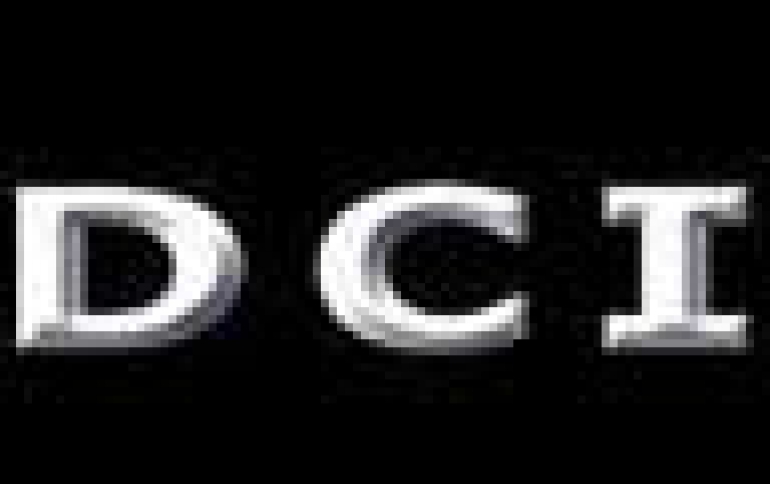
Hollywood Film Studios Agree on Pivotal Digital Standard
Hollywood's movie studios have agreed on a long-awaited and crucial technical standard that clears the way for a new era of digital film distribution.
The accord, reached after three years of bitter wrangling within the movie industry, marks a
crucial milestone in the evolution of cinema from celluloid reels to high-definition digital
movies that can be piped directly into theaters.
The agreement sets uniform specifications for projectors that movie theaters would use to show high-quality digital films in neighborhood movie theaters, allowing the new medium to flourish.
It was unveiled by Digital Cinema Initiatives (DCI), a joint venture set up in 2002 by the Disney, Twentieth Century Fox, Paramount, Sony, Universal and Warner Bros. studios to establish voluntary specifications for a digital cinema standard.
"We now have a unified specification that will allow manufacturers to create products that will be employable at movie theaters throughout the country and, it is hoped, throughout the world," said DCI technology officer Walt Ordway.
"In fact, the specification is being translated for international markets," he said of the accord that studios, theater operators and other sectors of the industry battled for years to refine.
A remaining stumbling block to digital projectors reaching local cinemas is the debate over whether film studios or theater owners will foot the bill for the extremely costly digital projection gear.
"These specifications should provide a common ground to spur innovation and encourage many more players who were previously resistant to invest capital in technology that may or may not have been viable," said Ordway.
As the market gets more competitive, the price of the equipment and its installation should drop to the point "where that stumbling block should no longer be of consequence," he said.
The major film studios represented by DCI, notably Warner Bros, hailed the new standard and announced plans to begin releasing feature films in the designated digital format.
A global digital film standard is "essential" for the movie industry to thrive, said Fox executives Paul Hanneman and Bruce Snyder in a statement.
Experts said the standardized format would help Hollywood, which is battling flagging audience numbers and ticket sales, compete with other media, including DVDs and the Internet by boosting the visual quality of films.
The new standard was also hailed by film-making titans George Lucas and Rick McCallum, who pioneered digital theatrical projection with the release of "Star Wars: Episode II -- Attack of the Clones" in 2002.
The "Star Wars" producers said they had been advocating a digital film standard for a decade, and "this is a day we have long hoped would come."
Standardized digital theater equipment is as important to the movie industry as digital video discs were for the home video industry, said "Toy Story 2" director John Lasseter of Pixar Animation Studios.
Digital screening of films avoids the wear commonplace with traditional film and results in the final screening of a movie being "as pristine as the first," Lasseter said.
The agreement sets uniform specifications for projectors that movie theaters would use to show high-quality digital films in neighborhood movie theaters, allowing the new medium to flourish.
It was unveiled by Digital Cinema Initiatives (DCI), a joint venture set up in 2002 by the Disney, Twentieth Century Fox, Paramount, Sony, Universal and Warner Bros. studios to establish voluntary specifications for a digital cinema standard.
"We now have a unified specification that will allow manufacturers to create products that will be employable at movie theaters throughout the country and, it is hoped, throughout the world," said DCI technology officer Walt Ordway.
"In fact, the specification is being translated for international markets," he said of the accord that studios, theater operators and other sectors of the industry battled for years to refine.
A remaining stumbling block to digital projectors reaching local cinemas is the debate over whether film studios or theater owners will foot the bill for the extremely costly digital projection gear.
"These specifications should provide a common ground to spur innovation and encourage many more players who were previously resistant to invest capital in technology that may or may not have been viable," said Ordway.
As the market gets more competitive, the price of the equipment and its installation should drop to the point "where that stumbling block should no longer be of consequence," he said.
The major film studios represented by DCI, notably Warner Bros, hailed the new standard and announced plans to begin releasing feature films in the designated digital format.
A global digital film standard is "essential" for the movie industry to thrive, said Fox executives Paul Hanneman and Bruce Snyder in a statement.
Experts said the standardized format would help Hollywood, which is battling flagging audience numbers and ticket sales, compete with other media, including DVDs and the Internet by boosting the visual quality of films.
The new standard was also hailed by film-making titans George Lucas and Rick McCallum, who pioneered digital theatrical projection with the release of "Star Wars: Episode II -- Attack of the Clones" in 2002.
The "Star Wars" producers said they had been advocating a digital film standard for a decade, and "this is a day we have long hoped would come."
Standardized digital theater equipment is as important to the movie industry as digital video discs were for the home video industry, said "Toy Story 2" director John Lasseter of Pixar Animation Studios.
Digital screening of films avoids the wear commonplace with traditional film and results in the final screening of a movie being "as pristine as the first," Lasseter said.













